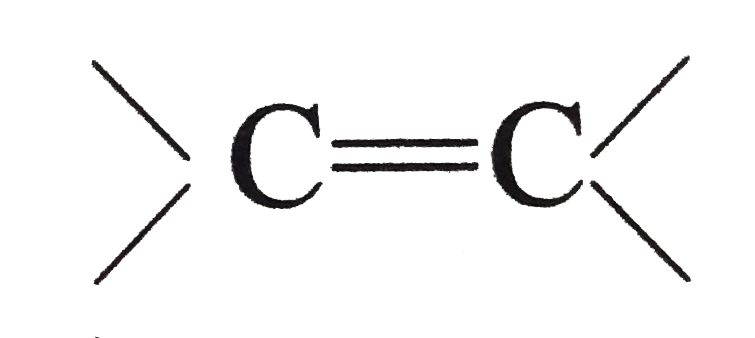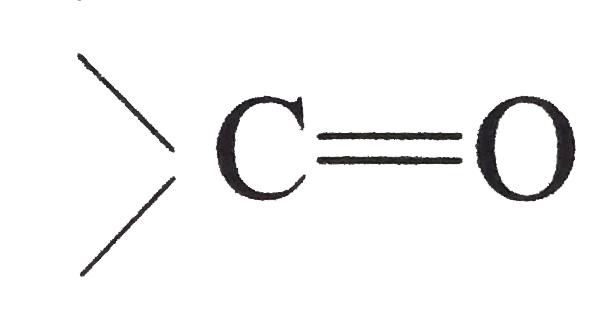(a) Explain the following phenomena with the help of Henry's law.
(i) Painful condition known as bends.
(ii) Feeling of weakness and discomfort in breating at high altitude.
(b) Why soda water bottle kept at room temperature fizzes on opening?
Step by step video & image solution for (a) Explain the following phenomena with the help of Henry's law. (i) Painful condition known as bends. (ii) Feeling of weakness and discomfort in breating at high altitude. (b) Why soda water bottle kept at room temperature fizzes on opening? by Chemistry experts to help you in doubts & scoring excellent marks in Class 12 exams.
Updated on:21/07/2023Topper's Solved these Questions
- SOLUTIONSBOOK - PRADEEPCHAPTER - SOLUTIONSEXERCISE - NCERT (EXEMPLAR PROBLEMS WITH ANSWERS, HINTS AND SOLUTIONS) (MATCHING TYPE QUESTIONS)
4 Videos
- SOLUTIONSBOOK - PRADEEPCHAPTER - SOLUTIONSEXERCISE - NCERT (EXEMPLAR PROBLEMS WITH ANSWERS, HINTS AND SOLUTIONS) (ASSERTION AND REASON TYPE QUESTIONS)
4 Videos
- SOLUTIONSBOOK - PRADEEPCHAPTER - SOLUTIONSEXERCISE - NCERT (EXEMPLAR PROBLEMS WITH ANSWERS, HINTS AND SOLUTIONS) (MULTIPLE CHOICE QUESTIONS - II)
9 Videos
- REDOX REACTIONS BOOK - PRADEEPCHAPTER - REDOX REACTIONS EXERCISE - Assertion reason type question
16 Videos
- SOME BASIC CONCEPTS OF CHEMISTRYBOOK - PRADEEPCHAPTER - SOME BASIC CONCEPTS OF CHEMISTRYEXERCISE - Competition (FOCUS) JEE (Main and Advanced)/Medical Entrance SPECIAL (VIII. Assertion-Reason Type Questions)(Type II)
13 Videos
Similar Questions
(a) Explain the following :
(i) Henry's law about dissolution of a gas in a liquid
(ii) Boiling point elevation constant for a solvent
(b) A solution of glycerol (C3H8O3) in water was prepared by dissolving some glycerol in 500 g of water . This solution has a boiling point of 100.42∘C . what mass of glycerol was dissolved to make this solution ? (Kb for water = 0.512 K kg mol−1)
View Solution(i) Pressure cooker reduces the cooking time. Explain the priciple involved.
(ii) Fish and meat can be preserved for a longer time in ice if common salt is added to it. Give reason.
(iii) When a glass of ice cold water is kept open at room temperature, what observation is found ? Give reason.
View Solution
Knowledge Check
Read the passage given below and answer the following questions :
Scuba apparatus includes a tank of compressed air toted by the diver on his or her back, a hose for carrying air to a mouthpiece, a face mask that covers the eyes and nose, regulators that control air flow, and gauges that indicate depth and how much air remains in the tank. A diver who stays down too Iong swims too deep or comes up too fast can end up with a condition called 'the bends." In this case, bubbles of gas in the blood can cause intense pain, even death.
In these following questions a statement of assertion followed by a statement of reason is given. Choose the correct answer out of the following choices
Assertion : Soft drinks and soda water bottles are sealed under high pressure.
Reason : High pressure maintains the taste and texture of the soft drinks.AAssertion and Reason both are correct statements and Reason is correct explanation for AssertionBAssertion and Reason both are correct statements but Reason is not correct explanation for AssertionCAssertion is correct statement but Reason is wrong statementDAssertion is wrong statement but Reason is correct statementWhen a liquid is completely miscible with another liquid, a homogeneous solution consisting of a single phase is formed. If such a solution is placed in a closed evacuated vessel, the total pressure exerted by the vapour, after the system attained equilibrium will be equal to the sum of partial pressures of the constituents. A solution is said to be ideal if its constituents follow Raoult's law under all conditions of concentrations, i.e., where pi is the partial pressures of the constituent i, whose mole fraction in the solution is xi and p∘i is the corresponding vapour pressure of the pure constituent. The change in the thermodynamic functions when an ideal solution is formed by mixing pure components is given by the following expression.
Δmix=G=ntotalRT∑ixiInxi ...(i)
where, ntotal is the total amount of all the constituents present in the solution.
ΔmixF=−ntotalR∑ixiInxi ......(ii)
ΔmixH=−ntotalRT∑ixiInxi−ntotalR∑ixiInxi=0 ........(iii)
ΔmixU=0 .........(iv)
Since botli the components of an ideal binary system follow Raoult's law of the entire range of the compositions, the partial pressure exerted by the vapours of these constituents over the solution will be given by
pA=xAp∘A ..........(v)
pB=xBp∘B .........(vi)
where, xA and xB are the mole fractions of the two constituents in the liquid phase and p∘A and p∘B are the respective vapour pressure of the pure constituents. The total pressure (p) over the solution will be the sum of the partial pressure. The composition of the vapour phase (yA) can be determined with the help of Dalton's law of partial pressures.
Two liquids A and B form an ideal solution at temperature T. when the total vapour pressure above the solution is 600 torr, the mole fraction of A in the vapour phase is 0.35 and in the liquid phase 0.70. The vapour pressure of pure B and A are:A800 torr, 1300 torrB1300 torr, 300 torrC300 torr, 1300 torrD300 torr, 800 torrWhen a liquid is completely miscible with another liquid, a homogeneous solution consisting of a single phase is formed. If such a solution is placed in a closed evacuated vessel, the total pressure exerted by the vapour, after the system attained equilibrium will be equal to the sum of partial pressures of the constituents. A solution is said to be ideal if its constituents follow Raoult's law under all conditions of concentrations, i.e., where pi is the partial pressures of the constituent i, whose mole fraction in the solution is xi and p∘i is the corresponding vapour pressure of the pure constituent. The change in the thermodynamic functions when an ideal solution is formed by mixing pure components is given by the following expression.
Δmix=G=ntotalRT∑ixiInxi ...(i)
where, ntotal is the total amount of all the constituents present in the solution.
ΔmixF=−ntotalR∑ixiInxi ......(ii)
ΔmixH=−ntotalRT∑ixiInxi−ntotalR∑ixiInxi=0 ........(iii)
ΔmixU=0 .........(iv)
Since botli the components of an ideal binary system follow Raoult's law of the entire range of the compositions, the partial pressure exerted by the vapours of these constituents over the solution will be given by
pA=xAp∘A ..........(v)
pB=xBp∘B .........(vi)
where, xA and xB are the mole fractions of the two constituents in the liquid phase and p∘A and p∘B are the respective vapour pressure of the pure constituents. The total pressure (p) over the solution will be the sum of the partial pressure. The composition of the vapour phase (yA) can be determined with the help of Dalton's law of partial pressures.
For an ideal solution in which p∘A>p∘B, the plot of total pressure (p) us the mole fraction of A at constant temperature in the vapour phase is:A B
B C
C D
D
Explain the following with proper reasonin
(i) Why do halogen acids which are easily added to
(ii) Pure HCN fails to react with aldehydes.
(iii) Why only RCHO, RCOCH3 and cyclic ketones react with NaHSO3?
(iv) Chloral hydrate is a stable compound even it is a gem-diol.
(v) Formation of oximes and other ammonia derivatives from carbonyl compounds require slightly acidic media for maxiumum rate
(vi) In the following reaction, three isomers are present in the equilibrium which is most stable

(vii) teh strurcture of two isomeric oximes formed by the reaction of acetophenon with hydroxylamine hydrochloride.
(viii) Why o-hydroxy benzaldehyde is a liquid at room temperature while p-hydroxy benzaldehyde is high metling solid?
View SolutionName the process associated with the following
(a) Dry ice is kept at room temperature and at one atmospheric pressure.
(b) A drop of ink placed on the surface of water contained in a glass spreads throughout the water.
(c) A potassium permanganate crystal is in a beaker and water is poured into the beaker with stirring.
(d) A acetone bottle is left open and the bottle becomes empty.
(e) Milk is churned to separate cream from it.
(f) Settling of sand when a mixture of sand and water is left undisturbed for some time.
(g) Fine beam of light entering through a small hole in a dark room. Illuminates the particles in its paths.
View SolutionName the process associated with the following
(a) Dry ice is kept at room temperature and at one atmospheric pressure.
(b) A drop of link placed on the surface of water contained in a glass spreads throughout the water.
(c) A potassium permanganate crystal is in a beaker and water is poured into the beaker with stirring.
(d) A acetone bottle is left open and the bottle becomes empty.
(e) Milk is churned to separate cream from it.
(f) Settling of sand when a mixture of sand and water is left undisturbed for some time.
(g) Fine beam of light entering through a small hole in a dark room. Illuminates the particles in its paths.
View SolutionThe variation of vapour of different liquids with temperature is shown in figure
(i) Calculate graphically boiling points of liquids A and B.
(ii) If we take liquid c in a closed vessel and heat it continuously. At what temperature will it boil ?
(iii) At high altitude, atmospheric pressure is low (say 60 mm Hg). At what temperature liquid D boils ?
(iv) Pressure cooker is used for cooking food at hill station. Explain in terms of vapour pressure why is it so ?

View SolutionRead the passage given below and answer the following questions :
Scuba apparatus includes a tank of compressed air toted by the diver on his or her back, a hose for carrying air to a mouthpiece, a face mask that covers the eyes and nose, regulators that control air flow, and gauges that indicate depth and how much air remains in the tank. A diver who stays down too Iong swims too deep or comes up too fast can end up with a condition called 'the bends." In this case, bubbles of gas in the blood can cause intense pain, even death.
In these following questions a statement of assertion followed by a statement of reason is given. Choose the correct answer out of the following choices
Assertion : Scuba clivers may face a meclical conclition called 'bends'.
Reason : 'Bends' can be explained with the help of Henry's law as it links the partial pressure of gas to that of its mole fraction.
View Solution
